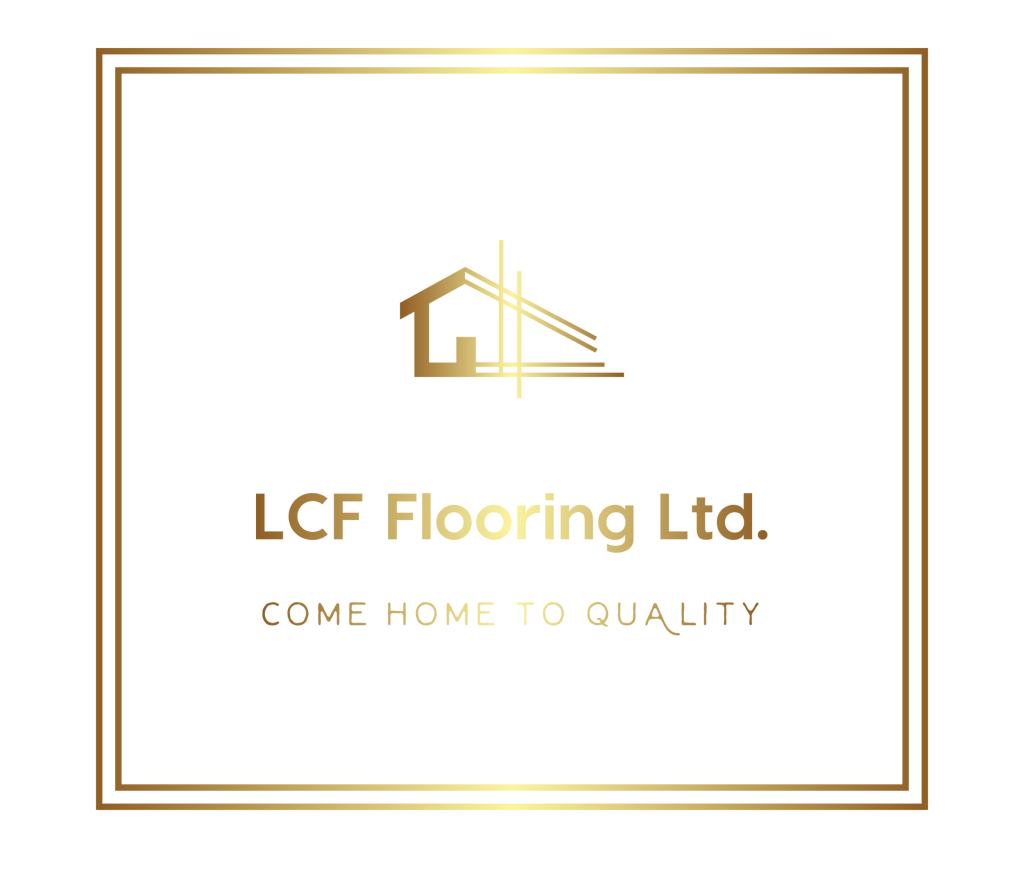Vinyl Flooring vs Laminate Flooring
If you’ve decided on a synthetic floor, the decision between vinyl flooring vs laminate flooring can be difficult. Vinyl flooring and laminate flooring have many similarities, but there are key differences between vinyl flooring vs laminate flooring that can help you decide what flooring to go with.
Read our guide on vinyl flooring vs laminate flooring to make your next flooring decision!
How are Vinyl Flooring and Laminate Flooring Similar?

Vinyl flooring and laminate flooring have many similarities. Both flooring styles are manufactured with four layers. Both flooring styles are synthetic boards with a printed image of wood, tile, or other flooring material as the third layer, and both vinyl flooring and laminate flooring are viable options to save money compared to hardwood flooring or tile.
If you are looking for vinyl flooring in Edmonton, contact us today.
What is Vinyl Flooring?

Vinyl flooring are floor boards designed to look like natural hardwood or stone flooring. Vinyl floors are able to have some of the most realistic wood prints available, and they have a little bit of give and movement to them.
Vinyl flooring is made of 100% synthetic material, that being, vinyl. Vinyl floor boards are made of four layers:
i. The back layer that stabilizes the board and keeps it from bending or bubbling
ii. The core layer that is made of solid vinyl material
iii. The printed vinyl layer, where an image of different kinds of wood or tile is printed on thin vinyl
iv. The wear layer, a protective layer that keeps the printed image from fading or getting rubbed off, and protects the board as a whole.
Vinyl planks reach up to 5 mm thick, the thicker the plank the more durable the flooring.
What is Laminate Flooring?

Laminate flooring are boards designed to look like hardwood boards or tiles. Laminate floor boards are incredibly hard with very little give or movement to them.
Laminate flooring is not 100% synthetic (although it is a synthetic board, unlike hardwood flooring). Laminate’s core is made from glued sawdust, and the core can range from medium to high density. Laminate flooring is made up of four layers:
- The backing layer that stabilizes the board, keeps it from snapping, cracking or bubbling.
- The core layer that is made up of high or medium density fibreboard (engineered wood boards usually made from sawdust, wood flakes/chips, or other plant fibres)
- The print layer, a photographic image that is the decorative part of a laminate board, making it look like wood or stone
- The wear layer, a protective overlay that reduces scratching and wear.
Benefits of Vinyl Flooring

Vinyl Flooring comes in two styles, the click into place, or glued down versions. The benefits of either style are:
VINYL FLOORING IS WATERPROOF
One of the key benefits of vinyl flooring is that the boards themselves are waterproof. If you spill any kind of liquid on them, so long as the spill doesn’t get under your flooring, you will not have an issue.
This also means you can install your vinyl flooring anywhere in your home, from bathrooms and kitchens to bedrooms and living rooms. Not having to worry about water damage to your floors is a huge benefit.
VINYL FLOORING IS EASY TO INSTALL
Whether you’re using the click into place floating vinyl floors or the glued down floors, both flooring types are incredibly easy to install. The click into place boards have almost no mess, and the glued down boards, when installed correctly, have a low level of mess as well.
VINYL FLOORING IS DURABLE
Vinyl flooring is durable and long lasting. Luxury vinyl flooring can look great for decades with very little maintenance. The flooring can handle heavy weights being dropped and is not known to crack or break.
GLUED DOWN FLOORS ARE EASY TO REPLACE/REPAIR
One of the main reasons to choose the glued down version of vinyl flooring rather than the click into place flooring is because, even though it’s a little more work to install, it is incredibly easy to repair.
If you damage a plank in the middle of your floor (as is what typically happens when a plank is damaged), you don’t need to remove the floorboards and remove every plank leading up to the damage.
Instead, glued down vinyl flooring can be removed by heating the glue up and simply peeling the damaged plank and placing a new one down.
Benefits of Laminate Flooring

LAMINATE IS INCREDIBLY EASY TO INSTALL
Laminate flooring is installed as a floating floor style, meaning it is really easy to DIY. The flooring requires no glue or nails, the boards simple click into each other, and your floorboards cover any gaps between the floor and the wall.
LAMINATE FLOORING IS DURABLE AND SCRATCH RESISTANT
A big perk for laminate flooring is that it is incredibly durable and scratch resistant. If you have pets, move lots of furniture, or are often scratching your floors, laminate flooring has an extra bit of resistance to scratching than other flooring types.
LAMINATE IS MORE COMFORTABLE TO STAND ON
Because laminate flooring is made from wood fibres, standing on the floor has a little more comfort and warmth than vinyl.
The floors are made of manufactured natural materials, meaning the natural fibres provide a little extra give and warmth to your flooring.
LAMINATE IS ENVIRONMENTALLY FRIENDLY
Laminate flooring is made from wood fibres such as sawdust and other wood refuse, so laminate flooring is more environmentally friendly than fully synthetic materials.
Disadvantages of Vinyl Flooring

VINYL CAN BE SUSCEPTIBLE TO SCRATCHES
Vinyl flooring has a less durable wear layer, meaning that it can more easily be scratched than laminate flooring.
VINYL IS COLDER AND HARDER TO STAND ON
Vinyl flooring is completely synthetic material, and being waterproof comes at the price of something feeling colder and less comfortable to stand on for long periods of time.
THE CLICK INTO PLACE BOARDS ARE TIME CONSUMING TO REPAIR
If you damage a click into place vinyl board, you have to remove your floorboards and take apart the entire floor to get to the damaged board, which is time consuming and quite a lot of work.
Disadvantages of Laminate Flooring

LAMINATE IS NOT WATERPROOF
Laminate flooring isn’t waterproof, so if you spill a lot of liquid on it, the floorboards themselves can be significantly damaged. As such, laminate flooring shouldn’t be installed anywhere there’s more risk of water, such as mudrooms, bathrooms, and kitchens.
LAMINATE IS TIME CONSUMING TO REPAIR
- Much like vinyl click into place boards, laminate flooring requires completely taking apart the floor to get to damaged boards. So if anything is wrecked, repair time is a lot of work.
LAMINATE REQUIRES MORE MAINTENANCE
Because laminate flooring can’t get wet, cleaning laminate floors requires laminate specific products and a more consuming process to take care of the boards.
Which Flooring Type is Right For You?

The right flooring type for you depends on the room you are placing the flooring in, and what your needs are. If you have pets and small children, laminate flooring may be a better choice as it’s scratch resistant. However, if you like being able to mop with water or use humidifiers, vinyl flooring may be a better choice.
Think about where you want the flooring to go, your DIY capabilities, and what your lifestyle is like to choose the flooring style that best fits you.
To learn more about vinyl flooring versus laminate flooring, contact us! We’d love to hear from you and talk about your flooring needs.
LCF Flooring has been in the Edmonton flooring business since 2006. We’re committed to providing Edmonton homes with the highest quality products for the best price, every time.




